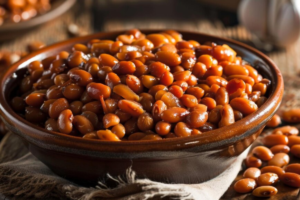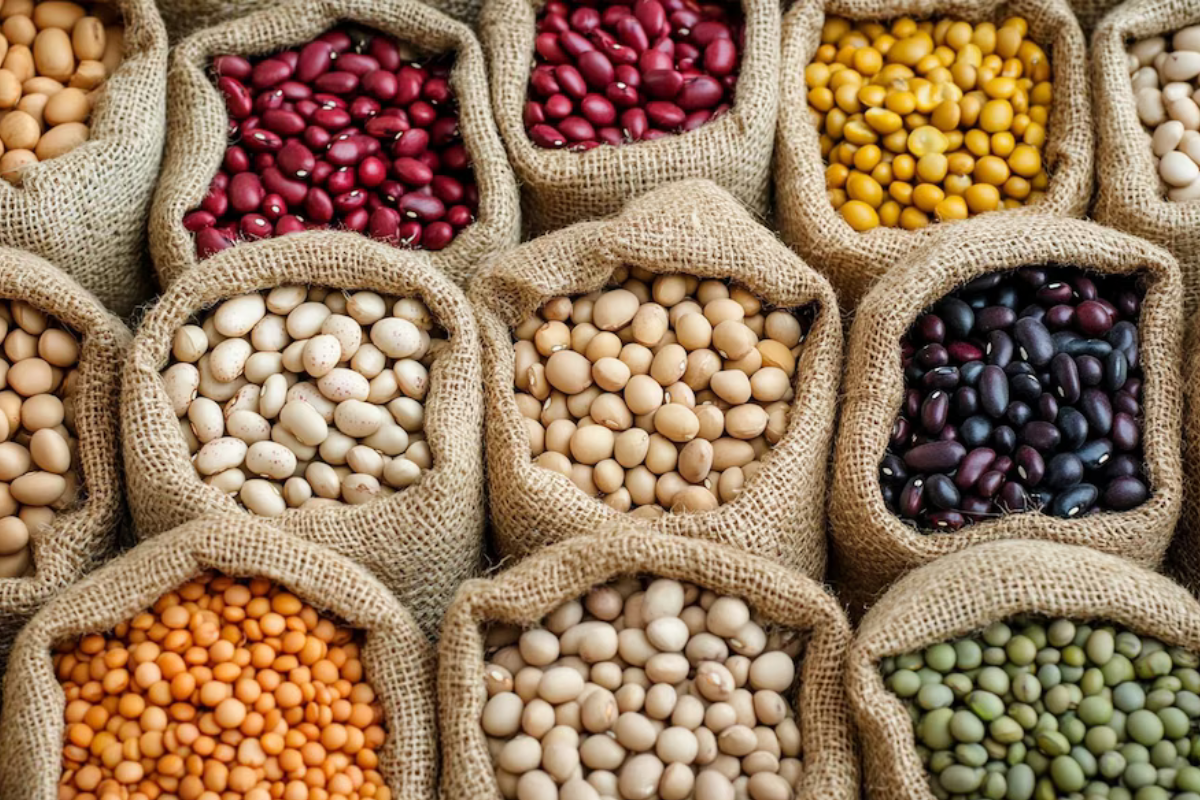Baked beans are a staple in many households worldwide, renowned for their versatility and comforting taste. Whether served with breakfast, as a side dish at a summer BBQ, or a simple meal on their own, baked beans have captured the hearts and stomachs of many. However, the key to perfect baked beans lies in the type of beans used. So, which beans are best for baked beans? This guide dives deep into the different beans you can use, the preparation methods, and everything else you need to know about making the best baked beans.
The History and Evolution of Baked Beans
Baked beans have a long history, with origins tracing back to Native American cuisine. Traditionally, Native Americans would cook beans slowly with animal fat and maple syrup, laying the foundation for what would become modern baked beans. European settlers, particularly the British, adopted and modified the recipe by incorporating their own ingredients, such as molasses and pork.
Today, baked beans are enjoyed in various forms around the world. In the United States, they are often sweetened with molasses or brown sugar, while in the UK, they are typically served in a tomato-based sauce. Each country and region has its spin on this timeless dish, but one thing remains constant: the use of the right beans is critical to getting that perfect texture and flavor.
For a broader understanding of beans’ global culinary impact, check out this history of beans globally.
What Beans Are Traditionally Used in Baked Beans?

Several types of beans are traditionally used in baked beans, with each offering its unique flavor and texture. The following beans are most commonly used:
1. Navy Beans (Haricot Beans)
The most popular bean for making baked beans is navy beans, also known as haricot beans. These small, white beans are favored for their mild flavor and soft, creamy texture, which absorbs sauces well. The name “navy beans” originated because they were a staple food for the U.S. Navy in the early 20th century.
Why Navy Beans?
Navy beans are small and tender, making them perfect for absorbing the rich flavors of the sauces used in baked beans, whether sweet molasses or tangy tomato sauce. These beans also have a short cooking time compared to larger varieties, making them convenient for both home cooks and manufacturers.
For more information on their health benefits, visit this Navy Beans Nutrition Facts.
2. Pinto Beans
Pinto beans are another option for baked beans, though they are more commonly used in Mexican and Southwestern cuisine. They are slightly larger than navy beans and have a creamy texture with an earthy flavor.
Why Pinto Beans?
Pinto beans are hearty and can hold up well during long cooking times, making them ideal for homemade versions of baked beans. They also absorb flavors beautifully and are especially delicious in recipes that call for smoky or spicy ingredients.
3. Great Northern Beans
Great Northern beans are a close relative to navy beans but are slightly larger and have a firmer texture. They are often used in soups and stews but work just as well in baked beans, particularly in recipes that require a longer cooking time.
Why Great Northern Beans?
These beans maintain their shape well after extended cooking, making them perfect for slow-cooked baked beans. They also have a mild, slightly nutty flavor, which adds depth to the dish.
4. Cannellini Beans
Larger than both navy and Great Northern beans, cannellini beans are another excellent choice for baked beans. Known for their creamy texture and meaty flavor, these beans are popular in more gourmet or artisanal recipes.
Why Cannellini Beans?
Cannellini beans add a heartier texture to baked beans, making them a popular choice in recipes that use bold flavors like bacon, molasses, and maple syrup. Their larger size and robust flavor also make them suitable for dishes that include meat or additional vegetables.
Why These Beans Work Best in Baked Beans
Each of the beans mentioned above has specific characteristics that make them ideal for the recipe. Their size, texture, and ability to absorb flavors are the main reasons they are preferred. Here’s a breakdown :
- Texture: Beans like navy and Great Northern beans become tender and creamy during cooking, which is essential for achieving the signature consistency of baked beans.
- Flavor Absorption: All these beans have mild flavors that allow them to take on the taste of the sauce, whether it’s sweet, savory, or smoky.
- Cooking Time: Most of these beans can be cooked relatively quickly or softened through soaking, making them practical for baked beans recipes.
The Importance of Soaking Beans
If you’re using dried beans, soaking them is a crucial step in the preparation process. Soaking helps soften the beans, allowing them to cook evenly and absorb the sauce more effectively. There are two primary methods for soaking beans:
1. Overnight Soak
The traditional method involves soaking the beans overnight. Simply cover the dried beans with cold water and let them sit for 8-12 hours. This slow soaking process helps to break down the beans’ starches, making them easier to digest and cook.
2. Quick Soak
If you’re short on time, a quick soak is a great alternative. To do this, bring the beans to a boil for about 2 minutes, then remove them from the heat and let them soak in the hot water for an hour. This method speeds up the soaking process while still adequately softening the beans.
Cooking Methods
Once your beans are soaked and ready, there are several ways you can cook the recipe, depending on your preferences and available equipment.
1. Slow Cooking
Slow cooking is one of the best methods for making baked beans. This method allows the beans to absorb all the flavors of the sauce while developing a tender texture. You can use either a Dutch oven or a slow cooker for this method.
- In a Dutch oven, beans are typically baked at a low temperature (around 250-300°F) for several hours. This slow, even heat creates a rich flavor and perfect texture.
- A slow cooker offers a hands-off approach. Set it to low and let the beans cook for 6-8 hours, stirring occasionally to ensure even cooking.
2. Instant Pot or Pressure Cooker
For those short on time, using an Instant Pot or pressure cooker is a game-changer. These devices significantly reduce the cooking time, often cutting it down to under an hour, while still delivering soft, flavorful beans.
3. Stovetop Method
If you prefer a more traditional approach, the stovetop method is a great option. Simply simmer the beans in your sauce over low heat for a few hours, stirring occasionally. Be sure to keep the heat low to avoid burning the beans or sauce.
Nutritional Comparison of Common Beans
In addition to their great taste, beans are a nutritional powerhouse, as they offer high amounts of protein, fiber, vitamins, and minerals. To illustrate this, here’s a quick comparison of the nutritional profiles of some of the most popular beans commonly used in baked beans:
Navy Beans
- Calories: 255 per cup (cooked)
- Protein: 15g
- Fiber: 19g
- Benefits: Excellent source of fiber, helps maintain heart health and supports digestion.
Pinto Beans
- Calories: 245 per cup (cooked)
- Protein: 15g
- Fiber: 15g
- Benefits: High in antioxidants and complex carbohydrates, making them a great energy source.
Great Northern Beans
- Calories: 209 per cup (cooked)
- Protein: 14g
- Fiber: 12g
- Benefits: Rich in iron and magnesium, supporting muscle function and energy levels.
Cannellini Beans
- Calories: 225 per cup (cooked)
- Protein: 15g
- Fiber: 11g
- Benefits: High in vitamin C and iron, helping to boost the immune system and improve circulation.
Enhancing Baked Beans with Different Ingredients
Once you’ve chosen your beans, you can get creative with your ingredients. Here are some common (and delicious) additions that elevate the flavor :
1. Sweeteners
- Molasses: A traditional ingredient in American-style , molasses adds a deep, rich sweetness that balances the savory flavors.
- Maple Syrup: This natural sweetener adds complexity and a subtle smoky sweetness to the dish.
2. Savory Ingredients
- Bacon: Adding bacon brings a smoky, salty flavor that pairs perfectly with the sweetness of the beans.
- Onions and Garlic: Sautéed onions and garlic add depth and a rich, savory flavor to the sauce.
3. Tangy Elements
- Mustard: A small amount of mustard can cut through the richness of the beans, adding a tangy flavor that brightens the dish.
- Vinegar: A splash of vinegar (such as apple cider vinegar) adds acidity, which balances the sweetness of the sauce.
Environmental Impact of Bean Cultivation.
Beans are not only nutritious but also highly sustainable. They require less water than other crops and enrich the soil by fixing nitrogen, reducing the need for synthetic fertilizers. As a low-impact protein source, beans not only contribute to sustainable agriculture but also play a crucial role in reducing greenhouse gas emissions. Furthermore, to learn more about how beans help the environment, visit this resource on the environmental benefits of eating beans.
Conclusion.
The key to great this recipe lies in choosing the right beans whether it’s navy, pinto, Great Northern, or cannellini beans. Each type offers a unique texture and flavor that can take your baked beans to the next level. By experimenting with different beans and ingredients, you can customize your dish to suit your taste, whether you prefer a sweeter or more savory dish.
So, next time you’re preparing this recipe, consider trying out different beans and flavors to create your perfect dish!

